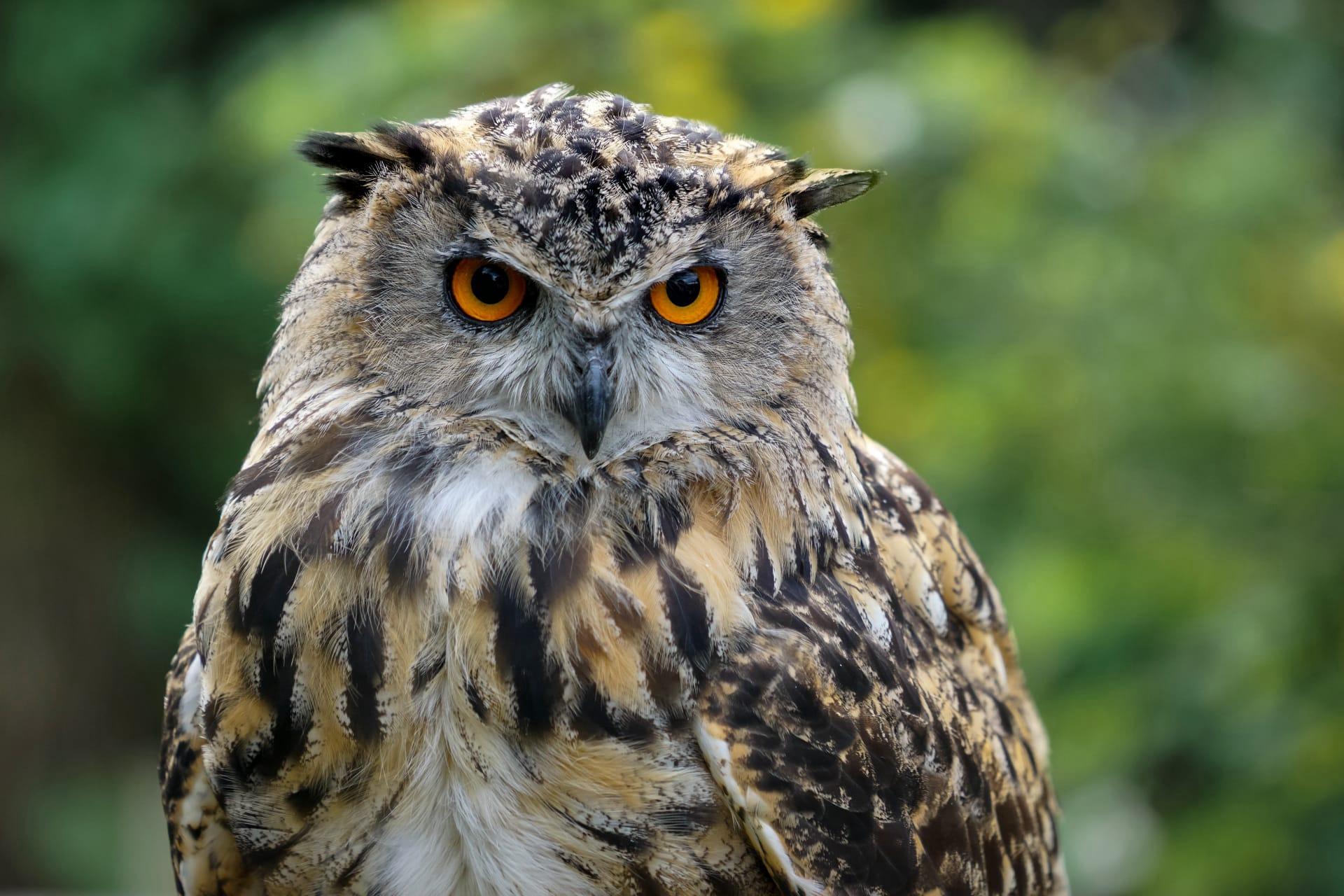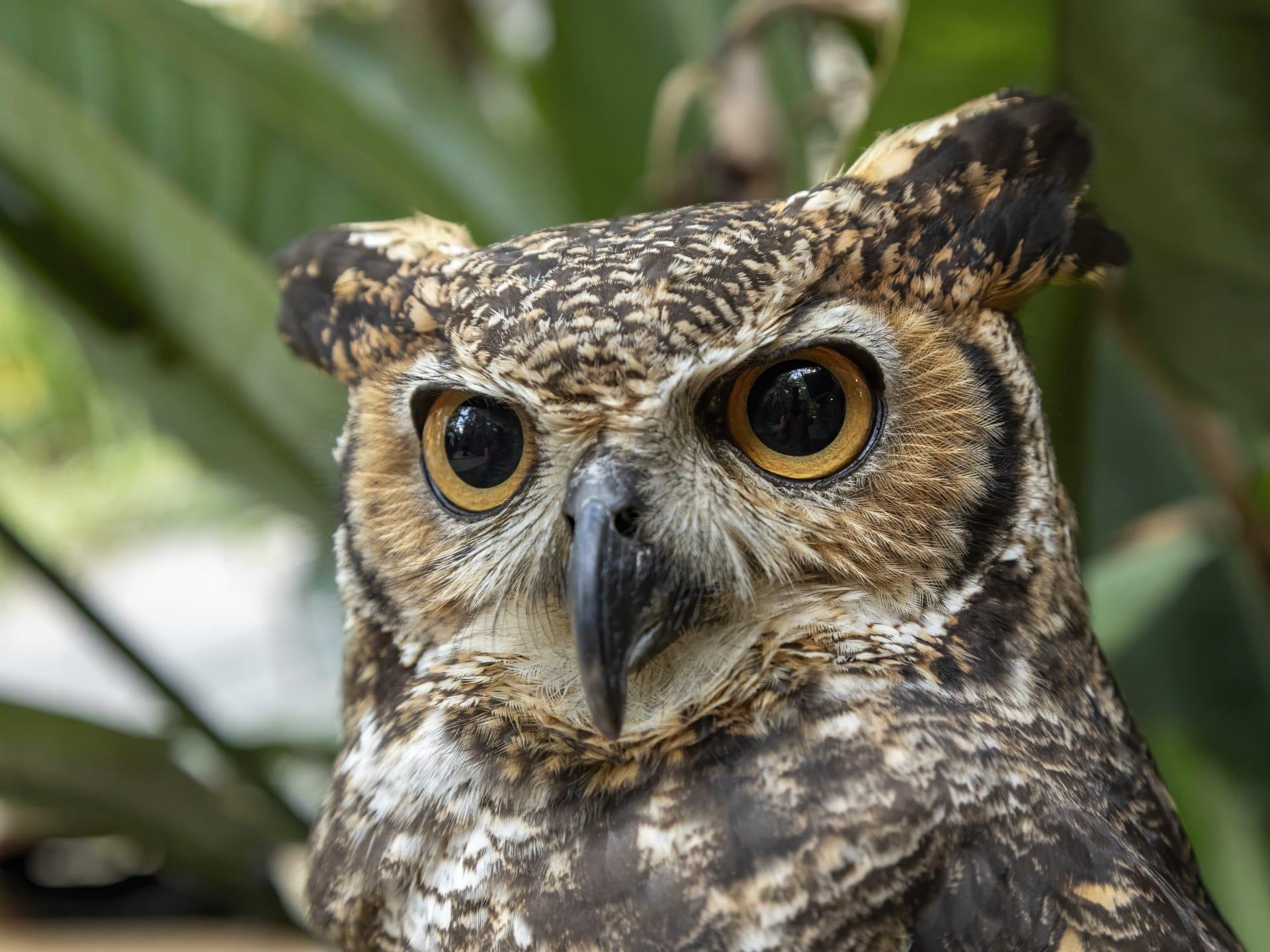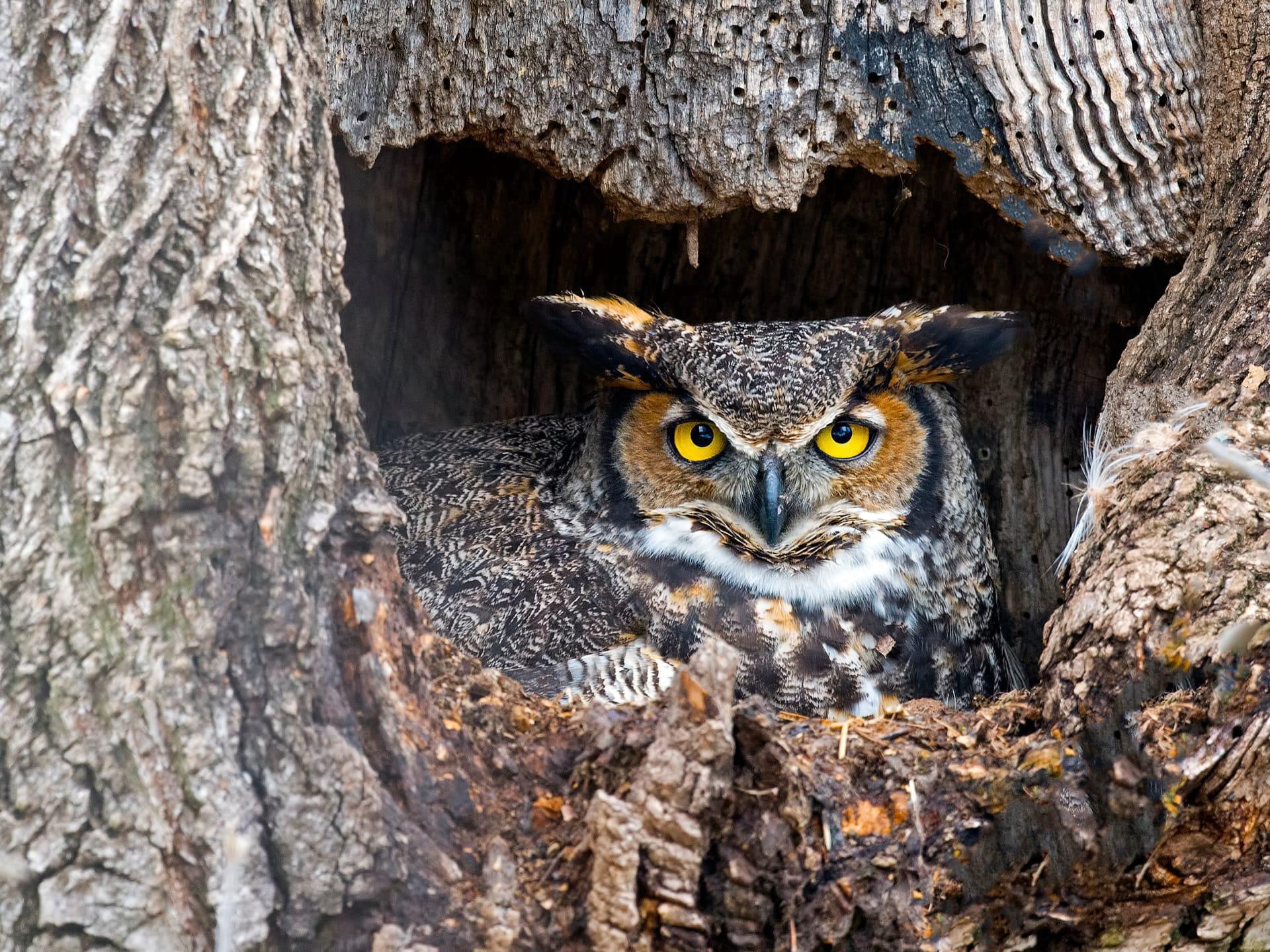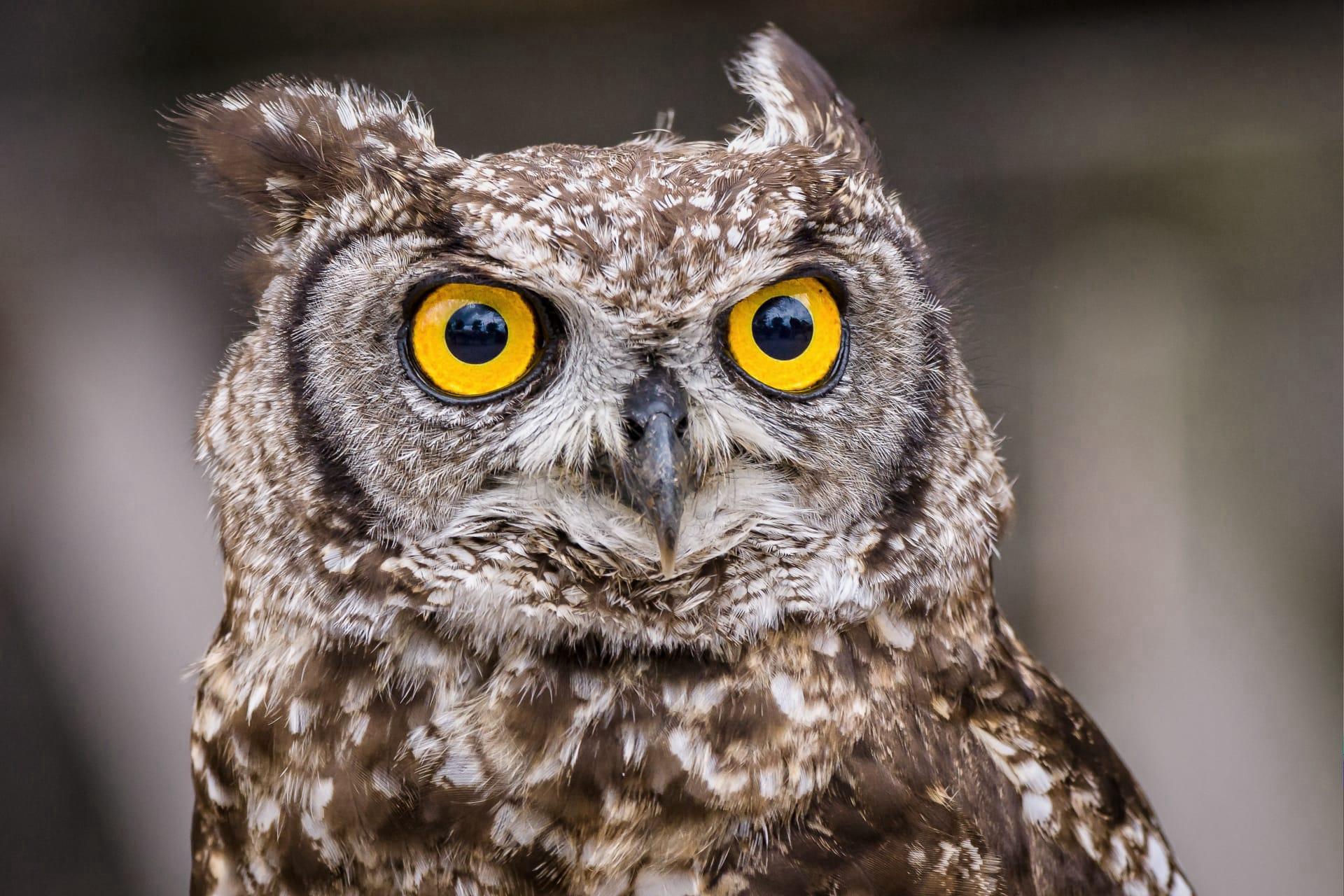Eagle Owl Characteristics
- Home /
- Mini Encyclopedia /
- Animal /
- Eagle Owl Characteristics
1
The Eagle Owl, a majestic bird of prey, boasts impressive physical features. With an average wingspan of about 138 to 170 centimeters, it's one of the largest owl species. These birds weigh between 1.5 to 4 kilograms, showcasing a robust and powerful build. The females, typically larger than the males, display remarkable size dimorphism. Their lifespan in the wild averages around 20 years, but in captivity, they can live up to 60 years. This longevity is quite exceptional among birds of prey.
One of the Eagle Owl's most distinctive organs is its eyes. Unlike most birds, the eyes of an Eagle Owl are forward-facing, providing binocular vision which is crucial for depth perception during hunting. These eyes are not true "eyeballs" but elongated tubes, offering a larger surface for light-sensitive cells. This adaptation enhances their night vision, making them formidable nocturnal hunters. Their eyes also have a high density of rod cells, which are more sensitive to light and movement, essential for detecting prey in low-light conditions.

2
Question: What do Eagle Owls eat and how do they hunt?
Answer: Eagle Owls are versatile predators, primarily feeding on a wide range of mammals and birds. Their diet often includes rodents, rabbits, hares, and even other birds up to the size of ducks and gamebirds. Their hunting method is a blend of patience and power. They typically hunt from a perch, using their exceptional night vision and hearing to locate prey. Once spotted, they swoop down silently with remarkable speed, using their powerful talons to capture and kill their prey. Eagle Owls are known for their ability to hunt in various terrains, from forests to open landscapes, demonstrating their adaptability as predators.

3
The locomotion of the Eagle Owl is characterized by silent flight, facilitated by their feather structure. The edges of their flight feathers have a soft, comb-like structure that reduces turbulence, making their flight nearly noiseless. This adaptation is vital for stealth hunting during the night. Their wingbeats are deep and powerful, allowing for efficient long-distance travel when searching for food or territory.
In terms of hunting behavior, Eagle Owls are apex predators. They have a keen sense of hearing, aided by asymmetrical ear openings – one higher than the other – which helps in accurately locating prey in the dark. They often hunt alone and are territorial about their hunting grounds. Their strong beak and talons are perfect tools for catching and dismembering their prey, demonstrating their prowess as skilled hunters.

4
Eagle Owls inhabit a variety of environments, demonstrating a high degree of adaptability. They prefer open landscapes for hunting, such as forests, rocky outcrops, and mountainous regions, but they can also be found in semi-deserts and arctic tundras. Their nesting sites are typically in cliffs, rocky ledges, or large trees, often reusing the same site for many years.
The breeding habits of Eagle Owls are as fascinating as their hunting skills. They are monogamous birds, often forming lifelong pair bonds. Breeding season begins in late winter, and they usually lay 1 to 4 eggs in a clutch. Both parents take part in incubating the eggs for about 34 to 36 days. Once hatched, the chicks are nurtured and fiercely protected by both parents. The young owls learn to fly at about 7 weeks old but often stay with their parents for several months, honing their hunting skills and learning to survive independently.

5
Book: "Eyes in the Night: The Untold Story of the Eagle Owl" provides a captivating exploration into the life of the Eagle Owl. Published in the United States in 2010, this work by ornithologist Dr. Sarah Houghton combines scientific research with compelling narratives. The book delves into the owl's behavior, habitat, and the challenges it faces in the wild, offering readers a comprehensive view of this magnificent bird.
Book: "The Silent Hunter: The World of the Eagle Owl" by British author and wildlife photographer James Ridley, published in 2015, offers a visually stunning journey into the world of the Eagle Owl. This book not only details the biological aspects of the owl but also showcases Ridley's breathtaking photographs, capturing the essence of these birds in their natural habitat. The narrative focuses on the owl's hunting techniques, mating rituals, and the conservation efforts to protect this species.